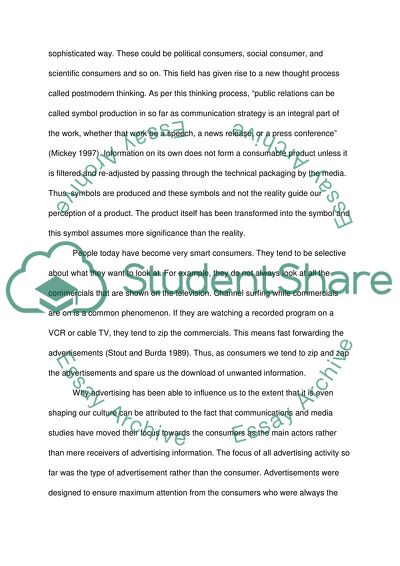Cite this document
(We Are What We Read Essay Example | Topics and Well Written Essays - 3000 words, n.d.)
We Are What We Read Essay Example | Topics and Well Written Essays - 3000 words. Retrieved from https://studentshare.org/anthropology/1746660-critically-evaluate-the-claim-that-we-are-what-we-read-sometimes-thoughtful-sometimes-romantic-sometimes-principled-sometimes-pragmatic-but-almost-always-a-consumer
We Are What We Read Essay Example | Topics and Well Written Essays - 3000 words. Retrieved from https://studentshare.org/anthropology/1746660-critically-evaluate-the-claim-that-we-are-what-we-read-sometimes-thoughtful-sometimes-romantic-sometimes-principled-sometimes-pragmatic-but-almost-always-a-consumer
(We Are What We Read Essay Example | Topics and Well Written Essays - 3000 Words)
We Are What We Read Essay Example | Topics and Well Written Essays - 3000 Words. https://studentshare.org/anthropology/1746660-critically-evaluate-the-claim-that-we-are-what-we-read-sometimes-thoughtful-sometimes-romantic-sometimes-principled-sometimes-pragmatic-but-almost-always-a-consumer.
We Are What We Read Essay Example | Topics and Well Written Essays - 3000 Words. https://studentshare.org/anthropology/1746660-critically-evaluate-the-claim-that-we-are-what-we-read-sometimes-thoughtful-sometimes-romantic-sometimes-principled-sometimes-pragmatic-but-almost-always-a-consumer.
“We Are What We Read Essay Example | Topics and Well Written Essays - 3000 Words”, n.d. https://studentshare.org/anthropology/1746660-critically-evaluate-the-claim-that-we-are-what-we-read-sometimes-thoughtful-sometimes-romantic-sometimes-principled-sometimes-pragmatic-but-almost-always-a-consumer.


